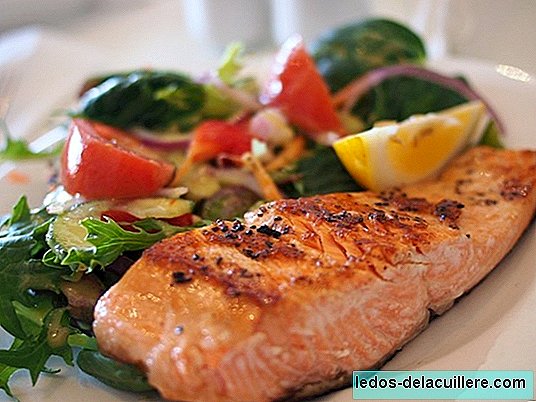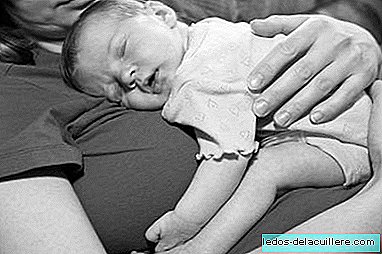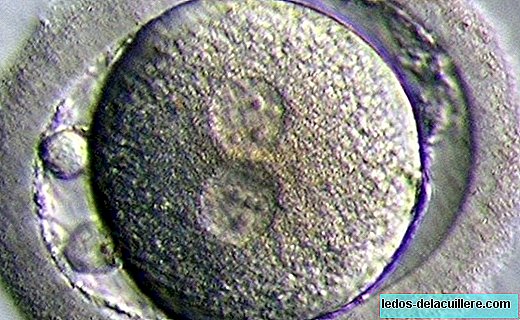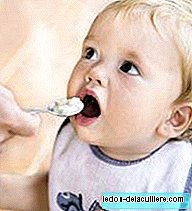According to experts, there are many Spanish children who do not meet the iron and vitamin D recommendations that are required according to their age, and this can lead to health problems and associated diseases.
It is very important that parents take care of their diet ensuring the correct contribution of all the minerals, vitamins and macronutrients they need, although sometimes supplementation may also be necessary.
We tell you everything you need to know about vitamin D and iron in children's diets, what consequences does your deficit have and what do pediatricians say about it.
Vitamin D: supplementation in infants and children at risk of deficit
The main function of vitamin D is to maintain calcium and phosphorus levels, and regulate bone metabolism. Its deficit has been associated with diseases Skeletal such as rickets, higher incidence of lung diseases such as bronchiolitis or asthma, higher incidence of cardiovascular diseases, caries, and even fertility problems.
According to a review carried out by the European Society of Pediatric Gastroenterology, Hepatology and Nutrition (ESPGHAN), a considerable number of healthy European children and adolescents (including Spanish children), would have a deficit of this vitamin.
The Spanish Association of Pediatrics recommends a contribution of vitamin D of 400 U / day in children under one year and 600 U / day from that age.The sun is one of the main natural sources of vitamin D, along with food and supplementation.
Foods rich in vitamin D

With the diet it is considered that only one is obtained 10 percent of the recommended vitamin D needs, being blue fish, shellfish, egg yolk, dairy and fortified foods those that contain the highest amounts of this vitamin.
Sunlight

Throughout history, sunlight has satisfied most of the human vitamin D requirements. Not in vain, 90 percent of the necessary vitamin D is obtained through sun exposure.
However, this is modified according to the skin phenotype, genetics, altitude, latitude, cloudiness, pollution and socio-cultural behaviors of the human being.
In recent years, changes in lifestyle, increasing physical inactivity, migratory movements and low sun exposure following cultural habits that lead to absolute protection have increased the deficiencies of this vitamin.
Vitamin D supplements

Vitamin D is found in supplements in two different forms: D2 (ergocalciferol) and D3 (cholecalciferol). Both increase the concentration of vitamin D in the blood.
The Spanish Association of Pediatrics recommends paying special attention to children and adolescents at risk of suffering from this vitamin deficit, in which case supplementation would be necessary according to the recommendations dictated by the doctor.
These risk groups are:
Breastfed babies under one year old they should receive a supplement of 400 IU / day of vitamin D.
Babies who drink formula milk, should receive a supplement of 400 IU / day of vitamin D until they take a daily liter of adapted formula enriched with vitamin D.
The premature children under one year of corrected age they should take 200 IU / kg / day up to a maximum of 400 IU / day.
 In Babies and more Vitamin D and colic: what is known about it and possible solutions
In Babies and more Vitamin D and colic: what is known about it and possible solutionsChildren older than one year or adolescents with poor nutrition, vegetarian or unusual diets should also receive supplements.
Others risk factor's they would be: dark skin (African, Caribbean and South Asian origin), little sun exposure (way of life, customs in dress, latitude, altitude, environmental pollution ...), chronic diseases or treatments that alter the synthesis of vitamin D.
With diet and sun exposure it is impossible to reach vitamin D levels that cause toxicity, but the same does not happen with supplements if they are administered above the recommended doses.
Iron: supplement only in case of anemia or risk
Iron is an indispensable mineral for the functioning of our body. It is involved in the transport of oxygen in the blood, as well as in the process of cellular respiration and in the production of hemoglobin. It is also necessary, among other things, to make hormones and connective tissue.
The Needs of this mineral depend on age and sex (women need more), although the requirements during pregnancy also increase. These are the recommended amounts according to the National Institutes of Health:

The iron deficiency can cause iron deficiency anemia and associated problems, especially in pregnant women, babies from six months who start with complementary feeding but still do not eat well or varied, and people with chronic diseases.
Iron during breastfeeding

The concentration of iron in breast milk is low, but is usually sufficient to meet the needs of the newborn, even if the mother has low levels. For this reason, it is not necessary to supplement breast milk with iron supplements for the baby
 In Babies and more The only 'vitamin' needed during breastfeeding is iodine
In Babies and more The only 'vitamin' needed during breastfeeding is iodineComplementary feeding after six months
After six months, when complementary feeding begins, pediatricians place special emphasis on the recommendation that at each meal there is some food rich in iron, including at least one daily serving of meat, poultry and fish.
 In Babies and more The BLISS feeding method as a modified version of the BLW: what it is and what benefits it brings
In Babies and more The BLISS feeding method as a modified version of the BLW: what it is and what benefits it bringsThis is because the iron reserves with which the baby is born are decreasing With the passing of the months, disappearing from the sixth month and increasing the risk of developing anemia if the diet is not adequate.
Iron is in many foods of animal origin (heme iron) and in many of plant origin (non-heme iron). The iron that is best absorbed is heme iron, which is what we can find in meat, fish and egg yolk.
Nonheme, which is what is contained in legumes, dark leafy vegetables and cereals, is absorbed worse, and that is why it is advised Accompany your intake of foods rich in vitamin C, such as oranges or broccoli (and supplement if the baby is not going to consume animal foods).
When is supplementation necessary?

As we read on the web In Family, of the AEP, iron supplementation in healthy infants is common in some countries to prevent anemia, assuming that this will improve your growth and mental development.
This occurs for example in the United States, where the Nutrition Committee of the American Academy of Pediatrics recommends supplementation with 1 mg / kg / day in breastfed babies from four months to the first year of life, or when the pediatrician considers.
However, according to a study conducted by the US agency USPSTF, although no harmful effects have been found in the administration of preventive iron, no differences in growth or psychomotor development have been observed between children who received the supplement and those who no.
Therefore, the AEP does not consider necessary the administration of preventive iron in infants who have not been premature or of low weight.When there is suspicion of iron deficiency anemia in the baby, as well as in those cases in which the pediatrician considers that the child may be at risk (babies who practically do not eat anything other than milk), a supplement with the dose and the time that the doctor recommends.
In short, a varied and balanced diet combined with outdoor physical activity Frequently, it should be sufficient for children to maintain adequate levels of vitamin D and iron, supplementation being necessary in cases of risk, or in infants below the year (in the case of vitamin D).
Photos | iStock












